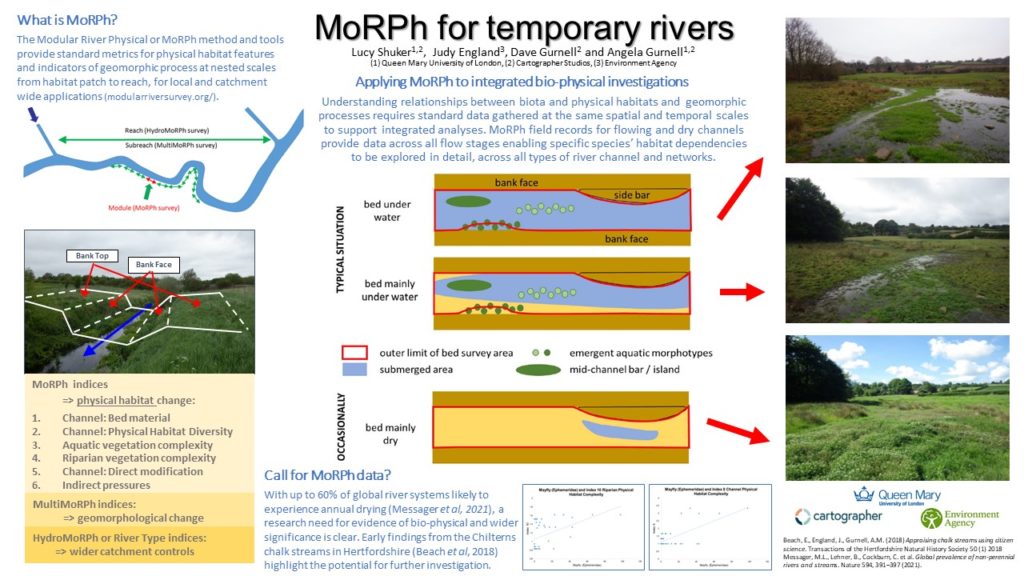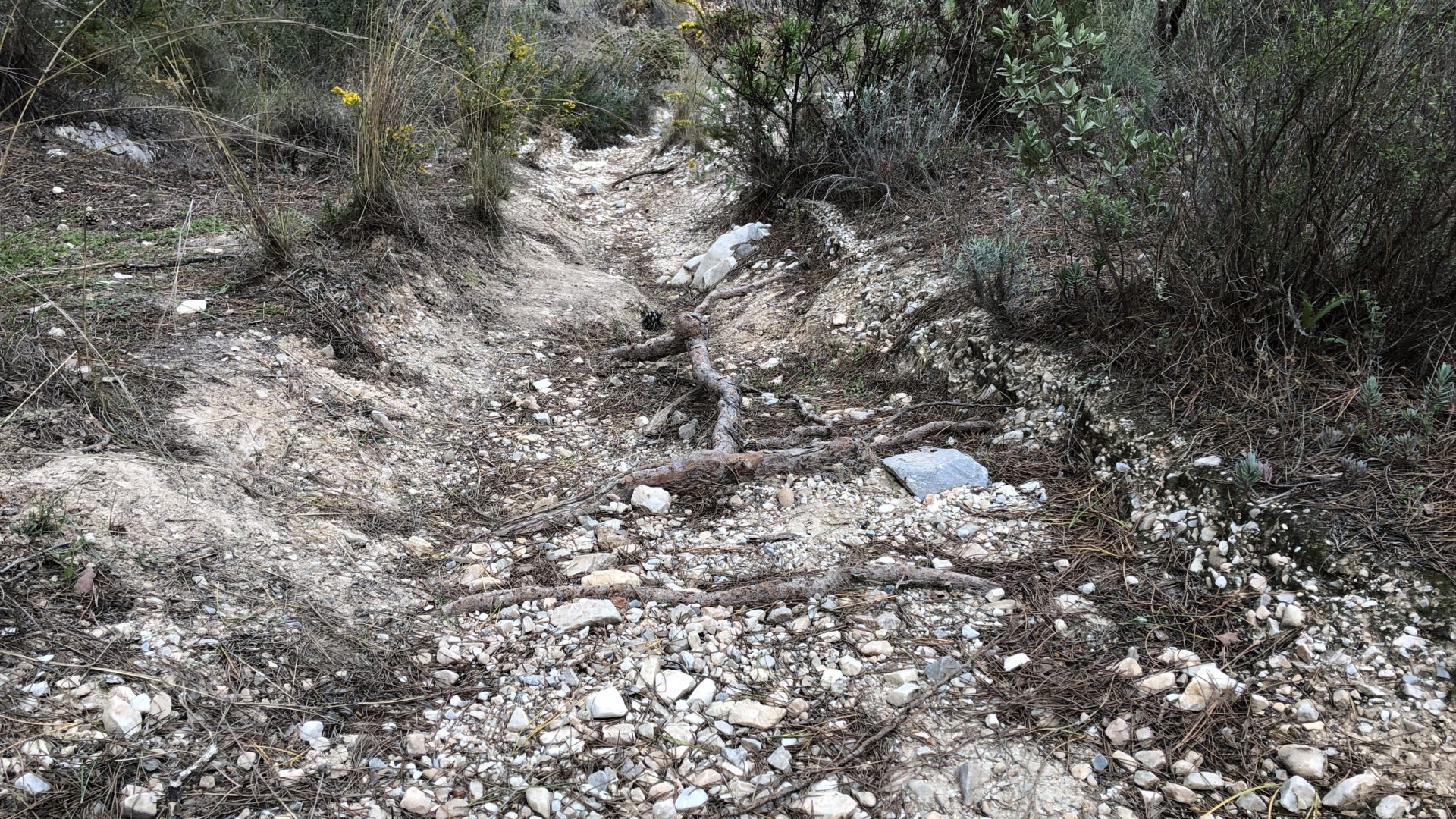Adaptation of the MoRPh field survey for Temporary Rivers meets the growing need for data and evidence of both aquatic and terrestrial vegetation alongside of other physical features on channel beds, to support ecological and hydro-geomorphological research on watercourses that seasonally or otherwise intermittently run dry.
The new MoRPh field survey form (v.13) includes options to record terrestrial vegetation on the channel bed. Full details are provided in the updated MoRPh Manual 2022.
The contribution of MoRPh method and tools to integrated bio-physical analysis, enables relationships between data gathered at the same place and time to be explored and disseminated. Leading to greater understanding of the significance of key parameters: including discrete habitat features and as indicators of stability or dynamic processes, to specific organisms, inhabiting upon both permanently and intermittently flowing channels.

MoRPh provides an observation based ‘modular river physical’ survey method for citizen scientist and professionals to gather standard data on habitat features and indicators of geomorphological processes in rivers and streams. These data, gathered at habitat patch scale, form the basis of a hierarchical ‘nested’ approach that together build a picture and understanding of the form, function and condition of the river system at the sub-reach, reach and catchment scales (Shuker et al, 2017).
The next Temporary Rivers and Streams meeting will be on Tuesday 13th June 2023. Tickets will go on sale 1st Feb 2023 you can set a reminder for the event and find out more via: Temporary Rivers & Streams Meeting 2023 Tickets, Tue 13 Jun 2023 at 09:30 | Eventbrite

